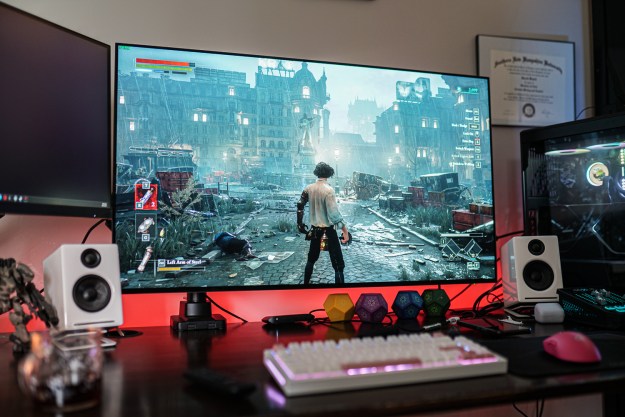GPU prices have been dropping for a while, and to get ahead of the crash, Nvidia slashed prices of its RTX 30-series GPUs a couple of weeks back, by as much as $500 in some cases. It sounds too good to be true — a good bit of justice after nearly two years of the GPU shortage locking gamers out — but the price drops aren’t as significant as we’re being lead to believe.
It’s true that some GPUs are as much as $500 less now, but the best graphics cards from Nvidia are still selling well above list price. High-end gamers rejoice, as GPUs are cheaper than ever. Everyone else? Well, it looks like we’ll just have to deal with the scraps.
For the enthusiasts

The RTX 3090 Ti is $500 less than it used to be, and that’s what you were waiting for, right? A $2,000 GPU is too much, but a $1,500 GPU is a different story (read: sarcasm). I’ve seen headlines left and right about the GPU market crashing, focusing solely on the tippy-top of high-end graphics cards that most people can’t afford and, frankly, don’t want.
For price cuts, Nvidia slashed $500 off the RTX 3090 Ti, $200 off the RTX 3090, and $100 off the RTX 3080 Ti. The 12GB RTX 3080 technically received a price cut down to $800, too, but that GPU never had an official list price in the first place. Every other GPU Nvidia currently offers is still sitting pretty at the list price they launched at two years ago.
Those cuts only apply to Founder’s Edition cards technically, though there’s a trickle effect into third-party cards from Asus, MSI, Gigabyte, and others. I’ve seen the price cuts myself as I update our roundup of GPU prices every week, tracking the crash of Nvidia’s high-end offerings over the course of a few weeks.
The issue is that those price reductions aren’t making their way down to the cards that actually matter, like the RTX 3070 for 1440p gamers and the RTX 3060 for 1080p. Not only have these cards not received a price cut, but they’re still selling for above list price.
Above list for everything that matters

It’s no secret that the vast majority of PC gamers still play games at 1080p, but you won’t find any of the best 1080p graphics cards sitting among the recent price cuts. Take the Asus RTX 3060 ROG Strix V2 OC as an example. It should cost around $330 to $350 based on the list price of the RTX 3060, but it’s selling for $480 at the time of publication.
You find it higher up the stack, too. The RTX 3070, which should cost around $500, is selling for $650 at the least and above $700 at the most. The slightly more powerful RTX 3070 Ti is even worse, with the PNY RTX 3070 Ti XLR8 listed for nearly $870 at some retailers. That doesn’t look like much of a price cut.
I understand why Nvidia wants to cut prices, especially after some conspicuous releases like the 12GB RTX 3080. For all the
This issue exclusively applies to Nvidia graphics cards. AMD’s Sapphire RX 6750 XT Nitro+, for example, is available at list price, while the MSI RX 6600 Mech 2X is available for $50 less than MSRP. Keep in mind that AMD never officially slashed prices, either; cards are just dropping in price as a new generation approaches.
RTX 40-series, some day

You’d normally see GPU prices drop as a new generation approaches, and it’s been rumored for a long while that Nvidia is set to release its RTX 40-series GPUs later this year. However, the most recent rumors provide some insight into what could be going on with mainstream GPU prices right now.
The most recent rumors say that Nvidia is only releasing one RTX 40-series GPU this year, while the rest will arrive in 2023. It’s just a rumor, so don’t take it as fact. However, it’s an interesting note in light of where mainstream GPU prices are right now and why Nvidia’s midrange and low-end options haven’t see a price cut.
AMD has already confirmed that its next-gen RX 7000 GPUs will launch at the end of 2022, and that has clearly had an impact on the prices of AMD
I’m speculating, because I don’t have a view into the internal machinations at AMD or Nvidia. But the point stands: If you’ve seen the recent GPU price cuts and are in the market for an Nvidia GPU, you may want to do some extra research into the price. Because, in most cases, everything below the RTX 3070 Ti is still selling for above list.
Editors' Recommendations
- Intel and motherboard makers aren’t on the same page about baseline settings
- The simple reasons your PC games don’t play as well as they should
- Don’t buy the RTX 3060 in 2024
- GPU prices are back on the rise again
- Intel’s next-gen GPU might be right around the corner




